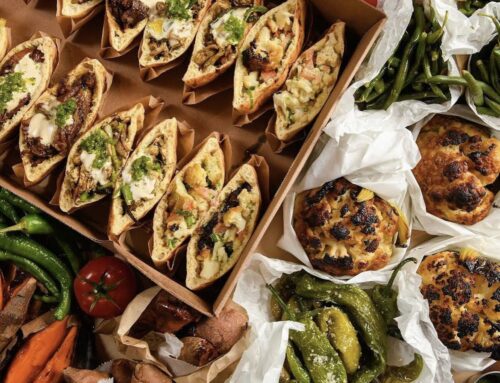They say a fresh coat of paint is the least expensive way to give a room a bold makeover.
But — if you’re willing to spend the money — nothing packs a bigger wallop than wallpaper when it comes to giving a room depth and character.
And these days, vintage wallpaper is the way to go. No one knows this more than Suzanne Lipschutz, owner of Secondhand Rose in
“At the moment,” Lipschutz says, “vintage wallpaper is very trendy. My regular retail business is much bigger than ever. So many people are buying it for their homes.”
Why? Because people are getting away from minimalism, she says.
“It’s boring, and people are wanting more texture in their lives.”
Vintage paper, she says “is so much more beautiful” than contemporary paper.
“Some of these papers are hand-painted or hand-screened with tempera dyes. It’s a whole lost art the way these papers are made. The old papers are nothing like the new papers. New paper just sits on the surface, whereas my papers become the wall.
“People are finally realizing the walls and floors of their house are more important than the furnishings. Furnishings can come and go, but the walls and floors make the room.”
So what patterns are homeowners choosing?
“People love these old velvet flock papers — everybody seems to want them,” Lipschutz says. “They have that very formal, European-tacky hotel room look about them. But also, the ’60s and ’70s [patterns] are very big now.”
Secondhand Rose, which also supplies paper for movie sets and fashion shoots, inventories just under 100,000 rolls of about 1,000 different vintage patterns from the1850s-1970s. (See examples at secondhandrose.com.)
Vintage papers don’t come cheap. Lipschutz’s papers start at $100 for double rolls, which cover about 60 square feet of wall space, and go up from there (she has a Frank Lloyd Wright wallpaper that sells for $1,200-plus for a triple roll).
Because of the money involved and the delicacy of the papers, Lipschutz recommends those buying vintage paper use a professional wallpaper hanger.
Parr says people frequently don’t know what they’re getting into when they try to hang vintage paper themselves.
“The average laymen, no matter how hard they try, many times they end up with a disaster.”
Vintage paper, he says, is “very temperamental,” requiring certain types of pastes and tools to get the job done. It also requires, he says, an incredible amount of prep work.
“High dollar papers are very sensitive to how the wall is — is it smooth enough, is it primed?” he says. “A lot of the time, I spend more time doing prep work than actually putting the paper up.”
And, he notes, in the neighborhoods where he works —
“They never go out of style,” he says of the traditional patterns. “I’ve seen paper that’s been on the wall for 35-40 years, and it looks as good today as it did back then. I’ve also seen papers that may only be 5-10 years old, but already they’re dated.”
His final word on investing in vintage paper?
“The higher-end line of papers really emit more of a warmth and depth that is impossible with the less expensive wallpapers,” Parr says. “So it’s really worth the money to spend an extra bit of money on real high-quality wall coverings.
“In the long run, they’ll last so much longer in terms of both quality and style.”





